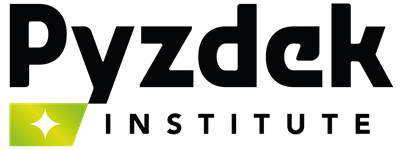Your cart is currently empty!
Description
Course Overview
This 5-day comprehensive course emphasizes hands-on practice. It is designed to equip public sector professionals with the practical knowledge and skills needed to implement Lean Six Sigma (LSS) methodologies in government operations. Participants will learn how to reduce inefficiencies, eliminate waste, and improve service delivery using the DMAIC (Define, Measure, Analyze, Improve, Control) methodology. The course is tailored for real-world applications in government and includes hands-on experience with Minitab and/or SigmaXL software for data analysis. Participants will work through multiple public sector-focused capstone projects, simulating real challenges faced by government agencies.
Upon successful completion, participants will earn the Lean Six Sigma Green Belt certification, issued by the Pyzdek Institute.
Course Duration: 5 Days (40 Hours)
Delivery Method: Classroom-based (recommended) or Virtual, with hands-on exercises with pencil & paper and Minitab or SigmaXL software.
Learning Objectives
By the end of this course, participants will:
- Understand the Lean Six Sigma methodology and how it applies to the public sector.
- Use DMAIC to drive process improvements within government organizations.
- Identify waste and reduce variability in public services.
- Collect and analyze data and make data-driven decisions.
- Lead and contribute to Lean Six Sigma projects aimed at improving public sector efficiency.
- Earn Lean Six Sigma Green Belt certification from the Pyzdek Institute.
Target Audience
This course is tailored for:
- Local, state and federal government employees involved in process improvement.
- Managers and supervisors looking to optimize government services.
- Government leaders seeking to enhance organizational efficiency.
- Professionals in public healthcare, planning & zoning, public utilities, permitting, education/library, public safety, judicial, legislative and other government sectors.
Pre-requisites
- A basic understanding of government operations and transactional processes are helpful but not necessary.
- Hands-on practice with process mapping and data collection & analysis are main elements of the course. Therefore, there is no requirement for prior experience with graphical software, Minitab or SigmaXL.
Course Outline
Day 1: Introduction to Lean Six Sigma in Government (8 Hours)
Morning Session (4 Hours)
- Introduction to Lean and Six Sigma
- History and principles of Lean and Six Sigma (0.5 hour)
- The synergy of Lean and Six Sigma (0.5 hour)
- Lean Six Sigma in Government
- Importance of efficiency and waste elimination in government (0.5 hour)
- Examples of public sector success using LSS (0.5 hour)
- Understanding the 8 Wastes in Government
- Waste identification and categorization practice session (1 hour)
- Overview of DMAIC
- The DMAIC methodology: Define, Measure, Analyze, Improve, Control (1 hour)
Afternoon Session (4 Hours)
- Define Phase
- Project Selection: Identify improvement opportunity in public sector operations (1 hour)
- Project Charter practice: Problem statements, scope, and objectives (1 hour)
- Understanding the Voice of the Customer (VOC): Translating VOC into Critical-to-Quality (CTQ) requirements for public services (1 hour)
- SIPOC Diagram practice: Understanding process inputs and outputs (0.5 hour)
- Pareto Chart practice: how to prioritize improvement effort (0.5 hour)
Day 2: Measure and Analyze Phases (8 Hours)
Morning Session (4 Hours)
- Measure Phase
- Process Mapping: Creating current-state maps for government services (1 hour)
- Data Collection: how to collect useful process data in public sector settings (1.5 hours)
- Data Analysis: Descriptive statistics and their evaluation (1.5 hours)
Afternoon Session (4 Hours)
- Analyze Phase
- Root Cause Analysis: create fishbone diagram (0.5 hour)
- Root Cause Analysis: 5 Whys practice session, identify causes of inefficiencies (0.5 hour)
- Data Visualization: histograms, individual value plots and dot plots (0.5 hour)
- Data Visualization: run charts and process behavior charts (1 hour)
- Data Visualization: Variability/Multi-vari charts (0.5 hour)
- Create and test hypotheses (1 hour)
Day 3: Improve and Control Phases (8 Hours)
Morning Session (4 Hours)
- Improve Phase
- Generating Solutions: Practice multiple problem-solving techniques (1 hour)
- Process Redesign: Create future-state process map (1 hour)
- How to use Kaizen methods for immediate improvements (0.5 hour)
- Test Solutions: How to use pilot programs to validate process improvements (1 hour)
- Evaluate improvement effort impact and success (0.5 hours)
Afternoon Session (4 Hours)
- Control Phase
- Control Plans: Sustaining the improvements made in government processes (1 hour)
- How to use process behavior charts to monitor improved processes (2 hours)
- Write and evaluate a Standard Operating Procedures (SOP) (1 hour)
Day 4: Minitab/SigmaXL Training and Project Work (8 Hours)
Morning Session (4 Hours)
- Intermediate-level analytic concepts
- Data distributions (1 hour)
- Process Capability Analysis (0.5 hour)
- Regression (1 hour)
- Government Case Studies: Reviewing real-world Lean Six Sigma government projects using numeric analysis and understanding common pitfalls (2 hours)
- Time permitting: power & sample size methods
Afternoon Session (4 Hours)
- Capstone Project Work
- Focused project work: Teams apply the DMAIC methodology to their assigned capstone projects, using advanced Minitab or SigmaXL tools (4 hours)
Day 5: Capstone Project Finalization and Presentations (8 Hours)
Morning Session (4 Hours)
- Capstone Project Finalization
- Teams finalize project findings, control plans, and prepare their presentations (3 hours)
- Presentation rehearsal and final project review (1 hour)
Afternoon Session (4 Hours)
- Project Presentations and Certification Exam
- Presentations: Each team presents their project findings and solutions (3 hours)
- After the presentations, there will be time for feedback and open discussion on the projects and solutions implemented (1 hour).
Capstone Project Details
Participants will work in teams of 3-4 members, with each team assigned a distinct capstone project that simulates a common government challenge. Teams will apply the DMAIC methodology, using Minitab or SigmaXL for data analysis, and present their solutions at the end of the course.
Capstone Project Options (One per team)
- Improving Permit Processing Times
- Objective: Reduce the processing time for building and business permits by 30%.
- Current Performance: 45-day average processing time.
- Target Performance: 31.5 days.
- Optimizing Public Health Service Delivery
- Objective: Reduce clinic appointment wait times by 50% and maintain service quality.
- Current Performance: 30-day average wait time.
- Target Performance: 15 days.
- Streamlining Government Procurement
- Objective: Reduce procurement lead time by 20%, ensuring greater efficiency and transparency.
- Current Performance: 120-day average lead time.
- Target Performance: 96 days.
- Reducing Waste in Document Processing
- Objective: Reduce document processing errors and paper usage by 50%.
- Current Performance: 15% error rate.
- Target Performance: 7.5% error rate.
Capstone Project Phases and Time Allocation
- Define Phase (Day 1)
- Teams define the problem and develop their project charters. (1-2 hours)
- Measure Phase (Day 2)
- Teams collect data and create baseline performance metrics. (2-3 hours)
- Analyze Phase (Day 2)
- Teams use root cause analysis tools and Minitab/SigmaXL to identify process inefficiencies. (2-3 hours)
- Improve Phase (Day 3)
- Teams develop and propose solutions, redesigning the process and planning pilot programs. (4-5 hours)
- Control Phase (Day 3 and Day 4)
- Teams develop control plans and use process behavior charts to sustain improvements. (2-3 hours)
Final Capstone Project Presentation
Each team will present their project findings and improvement plans during the final afternoon session on Day 5. Presentations should include:
- A summary of the problem, objectives, and baseline metrics.
- The use of Lean Six Sigma tools and data analysis.
- Solutions and process improvements implemented.
- Control plans to ensure long-term sustainability.
Certification Exam
To accommodate the schedule and allow flexibility, the certification exam will be conducted online after the course. Participants will have up to 30 days to complete the exam, ensuring they have enough time to review the course materials.
- Format: 60 multiple-choice questions.
- Duration: 2 hours (open book, open notes).
- Completion Deadline: Within 30 days after the course completion.
Participants are encouraged to use their course notes, materials, and resources to complete the exam, simulating real-world conditions where tools and knowledge are accessible during project work.
Certification Requirements
- Completion of Capstone Project: Active participation in all phases of the capstone project.
- Passing the Certification Exam: A multiple-choice and practical exam testing knowledge of Lean Six Sigma and Minitab/SigmaXL.
- Team Collaboration: Full engagement in group work, including contribution to project deliverables.
Materials Provided
- Course Manual: Includes DMAIC templates, Lean Six Sigma concepts, and statistical software instructions.
- Minitab or SigmaXL Software, if needed: Trial license provided for hands-on practice.
- Project Data: Pre-prepared datasets for each capstone project.
Post-Course Support and Resources
- Ongoing Access to Course Materials: Participants will continue to have access to the digital course manual, statistical software templates, and resources for up to 6 months after course completion.
- Lean Six Sigma Community: Upon course completion, participants will be invited to join the Pyzdek Institute’s Lean Six Sigma online community, where they can network with other professionals, ask questions, and access new insights.
- Alumni Benefits: Participants may (will?) receive discounts on future Lean Six Sigma courses, including Black Belt certification.
Certification Maintenance and Next Steps
- Maintaining Certification: Your Green Belt certification from the Pyzdek Institute is valid for life. However, it is recommended to continue practicing Lean Six Sigma methodologies in your organization to maintain your skills.
- Advancing to Black Belt: After completing your Green Belt certification, you may consider advancing to Lean Six Sigma Black Belt certification. Contact us for information on advanced training and certifications.
Additional information
| Course Duration: | 5 Days (40 Hours) |
|---|---|
| Delivery Method: | Classroom-based or Virtual |

